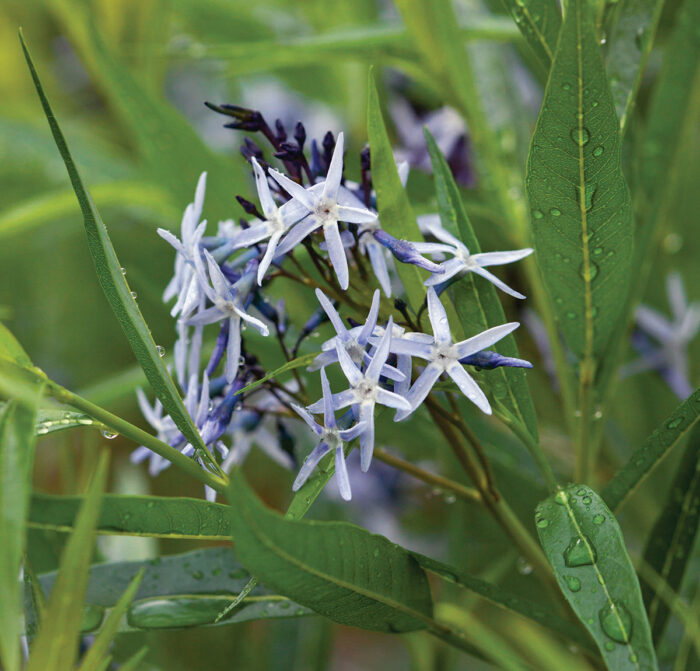
Got a challenging location in your garden? You’re not alone. I have never encountered a landscape without at least one area that is difficult for growing plants. Mine is a highly visible space at the corner of my house that experiences a wide range of extremes during the growing season.
When it rains, runoff from the hardscape and gutters collects in this area, temporarily making it incredibly wet. This spot is also where the basement sump pump outlet is located. A western sun exposure bakes nearby walls and pathways, and the resulting reflective heat keeps this area hotter than the surrounding garden, even late into the night. The soil is compacted from former construction projects, and there are inches of rocks and gravel from a former deck pad. In addition, this area has received decades of road-salt pollution.
Thanks to the superpowers of native perennials, this difficult spot is rich with plant life. By connecting this garden’s growing challenges to similar ecosystems, I was able to find plants that thrive beautifully here. The key was choosing natives that were adaptable to the ever-changing extremes of this location.
Why do native plants work so well?
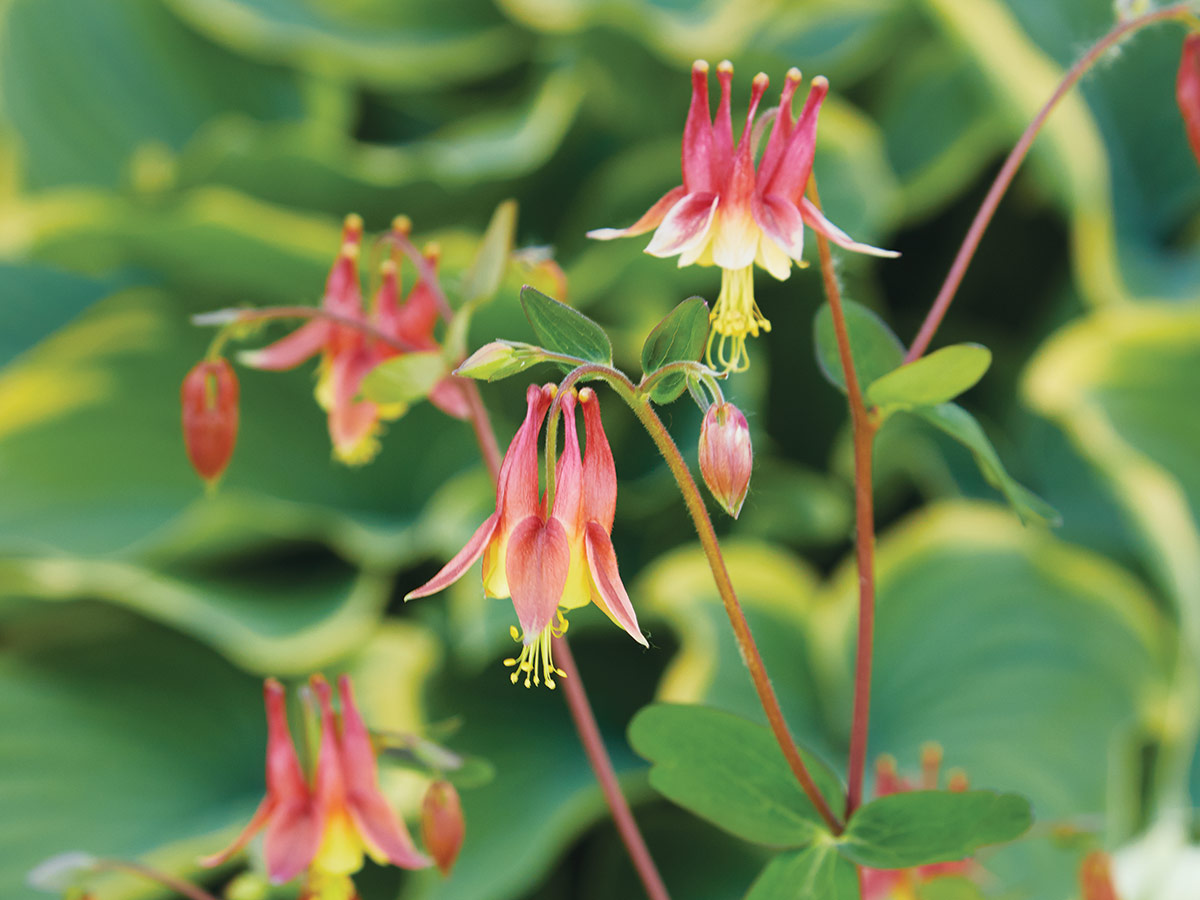
Many gardeners may not realize it, but there is a rich palette of North American native plants that look great and perform well in gardens. Vast and diverse ecosystems—including coastal dunes, mountaintops, deserts, prairies, woodlands, and everything in between—have created plant communities bursting with horticultural potential. Each ecosystem has its own environmental extremes, and as a result thousands of adaptable perennials have evolved characteristics that make them great candidates for challenging gardens.
In addition to being tough, many native plants are low-maintenance and positively impact soil health. Sited properly, they often require no irrigation or soil amendments, thanks to evolved root systems that reach deep into the soil for water and nutrients. Some may need minimal care, such as winter cutbacks, but that is nothing when you weigh all their positive attributes. These plants stabilize soil and prevent erosion. Ongoing research is uncovering their positive effects on soil microbiomes and nutrient cycles. Many can store rainwater, purify runoff, and sequester carbon, while others are remarkably vigorous and compete well with weeds—some even tolerate mowing. They are often less palatable to herbivores due to features like hairs or aromatic oils, making them resilient against damage from deer, rabbits, and groundhogs.
Even in a problematic area, easygoing natives are a great choice for gardens. The following are some proven sun and shade rock stars to consider. These perennials either come from tough places or have extremely wide distributions, making them highly adaptable and beautiful for an array of situations.
Dynamic Sun-lovers
Shining bluestar is a visual delight with blue spring flowers and yellow fall color
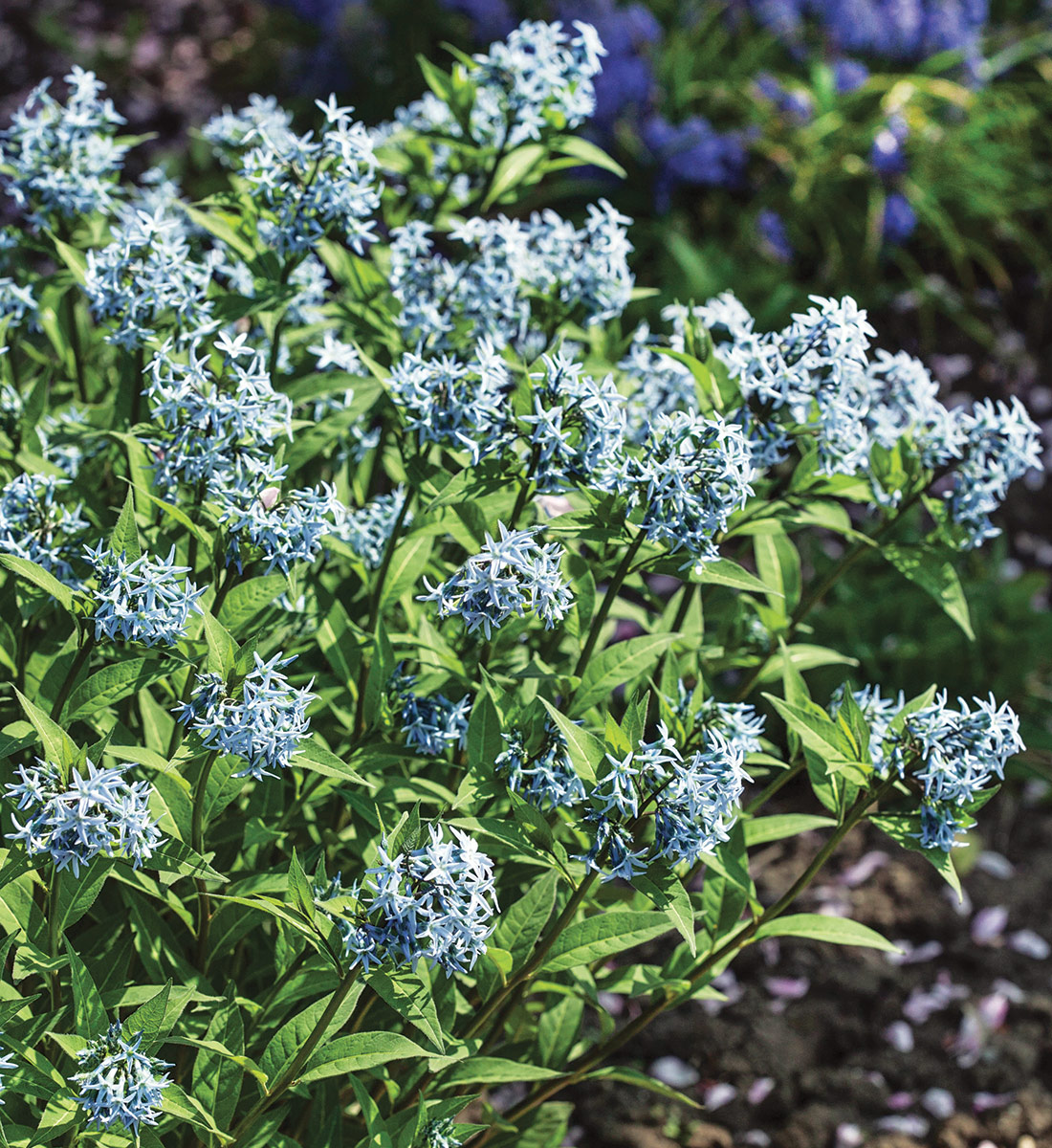
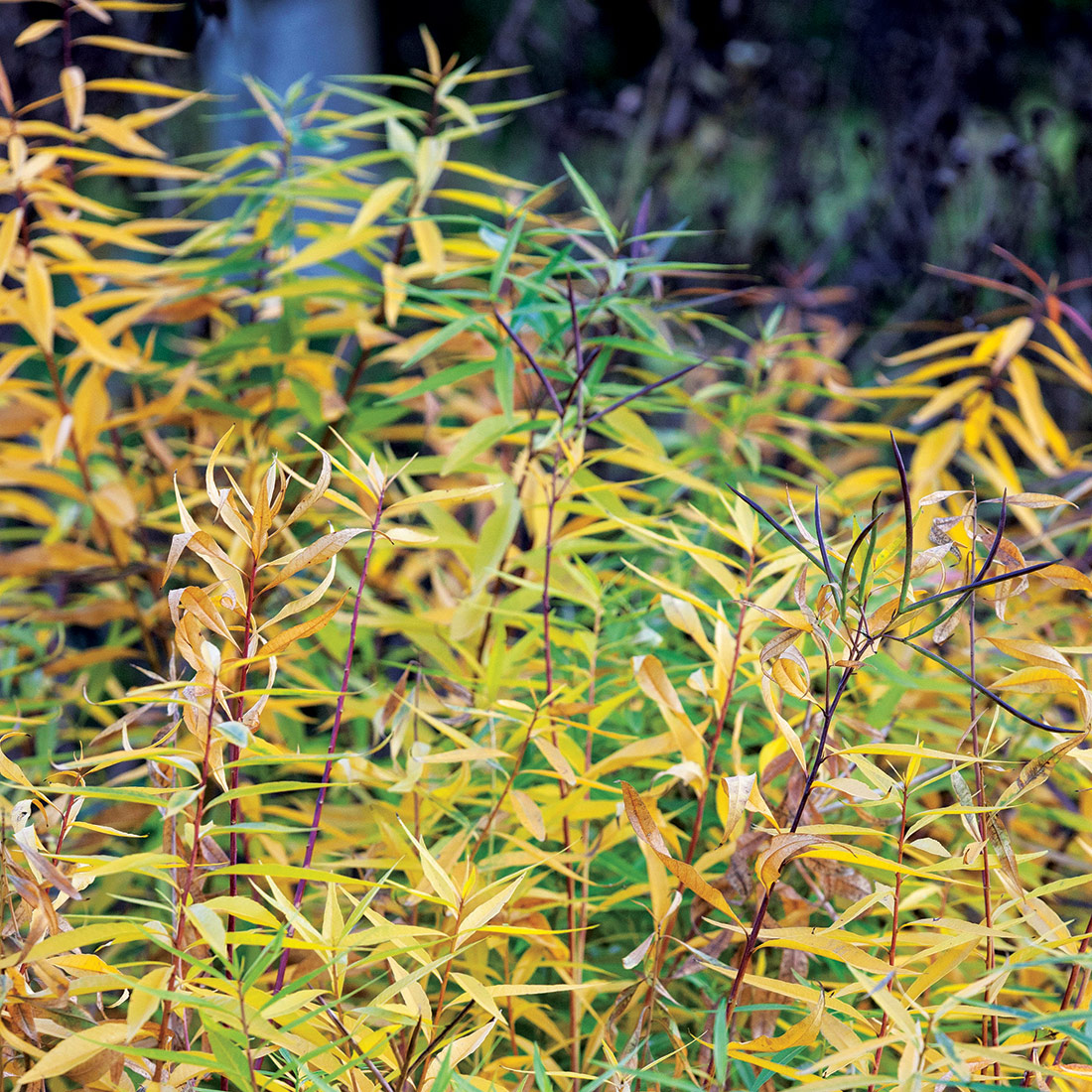
Name: Amsonia tabernaemontana var. illustris
Zones: 5–9
Size: 3 feet tall and wide
Conditions: Full sun to partial shade; rocky to average, well-drained soil
Native Range: Central United States
Shining bluestar is sure to be a garden powerhouse with its ability to adapt to most conditions and three solid seasons of interest. The plant emerges in late spring with elegant emerald shoots that are adorned in clusters of sky-blue flowers. This species in particular is known for being covered in blue for several weeks. The blooms are then replaced by emerald-green, shiny foliage, eventually becoming a dense mound. In fall the whole plant turns a gleaming, clear yellow and holds its leaves until a hard frost (inset). As plants age, they can be cut back in half right after flowering to prevent reseeding and to keep the plant small. A favorite of big bumblebees, shining bluestar also attracts butterflies while being inedible to herbivores. Plant in the perennial border as a specimen, or scatter it through a meadow or cottage garden for a stunning display in spring and for bright golden clouds of foliage in autumn. Native to moist clay prairies, meadows, and marshes, this plant excels in most soil types and is adaptable to varied moisture levels. Try it in spots too wet for other perennials.
White sage offers attractive silver foliage for dry and sloping sites
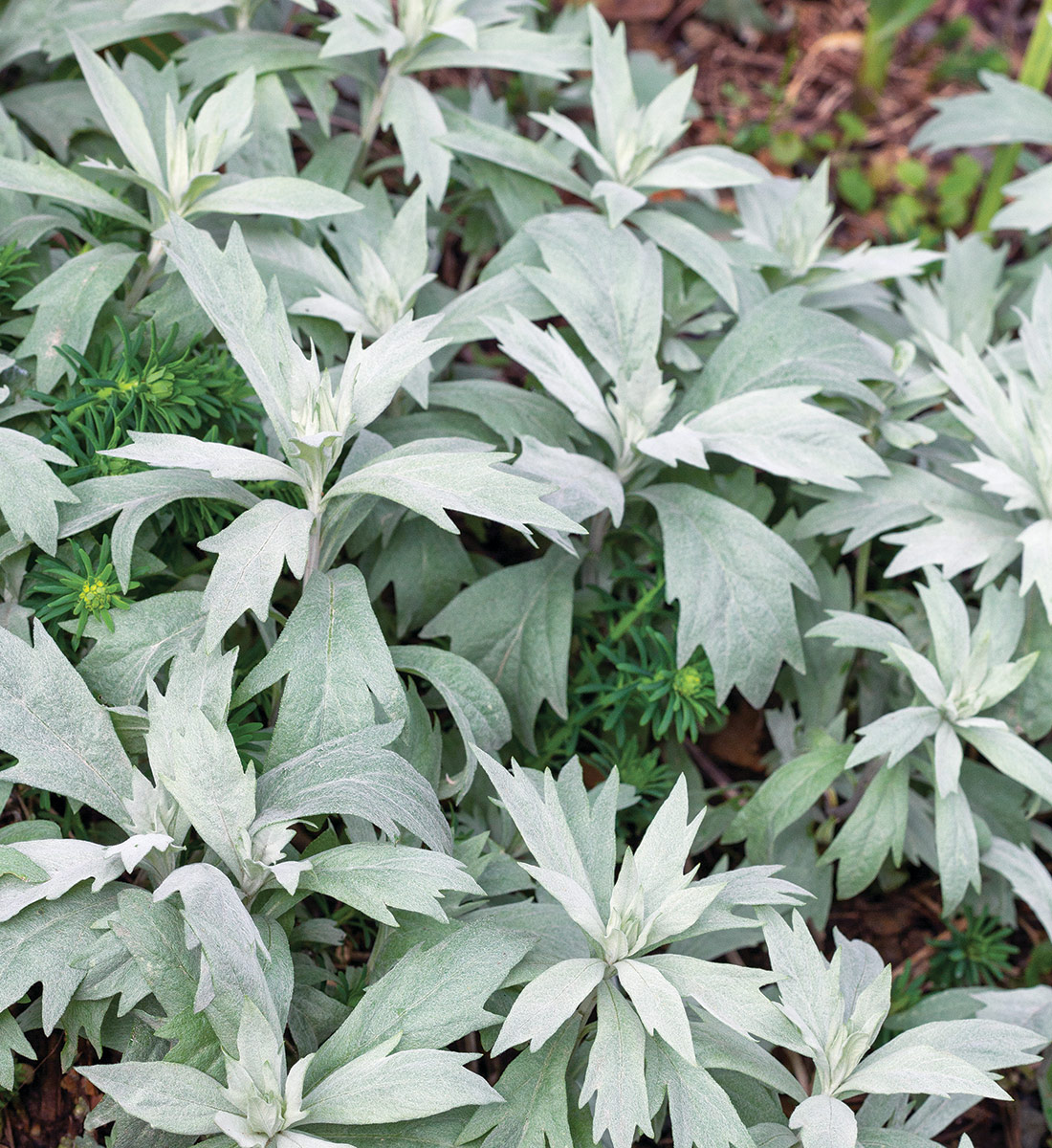
Name: Artemisia ludoviciana and cvs.
Zones: 4–9
Size: 3 feet tall and wide
Conditions: Full sun; poor to average, well-drained soil
Native Range: Western and central United States
With common names like “white sage” and “silver wormwood,” this plant is one of the best choices for adding shimmer to the garden. Easy to grow in most spaces, this clumping perennial emerges in spring on erect stems of gray, fine-textured foliage. The aromatic leaves aren’t picky about pruning and can be sheared to keep the plant in a desired shape. The silver color comes from thick, fuzzy hairs on the surface of the foliage, making the whole plant soft to the touch (a great feature near pathways). The flowers are attractive but not showy, with tiny, lime-green to yellow clusters. A low-maintenance plant that becomes a ground cover over time, white sage can even tolerate mowing. Because some selections are considered aggressive, try finding dwarf or well-behaved garden varieties of white sage like GardenGhost™, ‘Silver King’, or ‘Valerie Finnis’. Native to dry slopes and dry prairies, this is a great choice for erosion control, covering steep hills, or a cascading effect over walls and terraces.
Smooth blue aster delivers a late-season feast for the eyes and pollinators
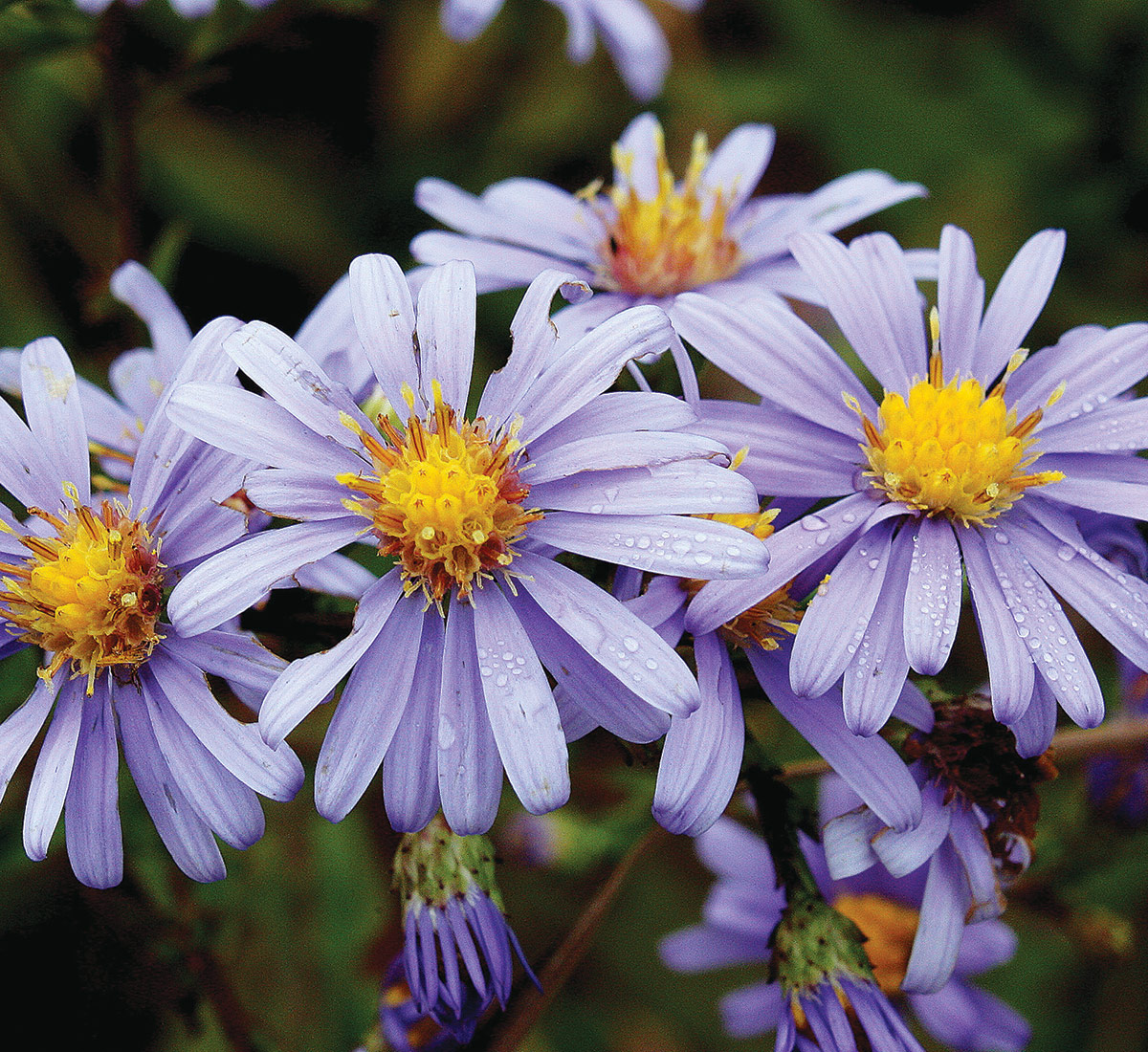
Name: Symphyotrichum laeve
Zones: 3–9
Size: 3 to 4 feet tall and 3 feet wide
Conditions: Full sun to partial shade; dry to average, well-drained soil (but tolerates most soil conditions)
Native Range: North America
It would be a shame to talk about adaptable native perennials and not mention at least one aster. Smooth blue aster is distributed across most of North America, making it an easy, low-maintenance addition to almost any garden. Growing as a mass of green foliage, this plant is a nondescript mound until midsummer, when it shoots upward with fine branches that sport dozens of blooms in late summer/early fall until frost. The bluish-purple, daisy-like blooms are about an inch across. Peak bloom is right as autumn color is starting to develop in the rest of the garden, complementing the usual yellows, oranges, and reds beautifully. The plant itself has a smooth, shiny texture with strappy leaves. Its dry seed is food for many types of birds, and the nectar feeds many pollinators during the end of the season. Rhizomes spread over time, allowing this long-lived perennial to get a little wider every year. Native to prairies, woodland edges, and open woods, smooth blue aster performs well in most garden conditions.
Slender mountain mint adds interesting texture to beds and borders
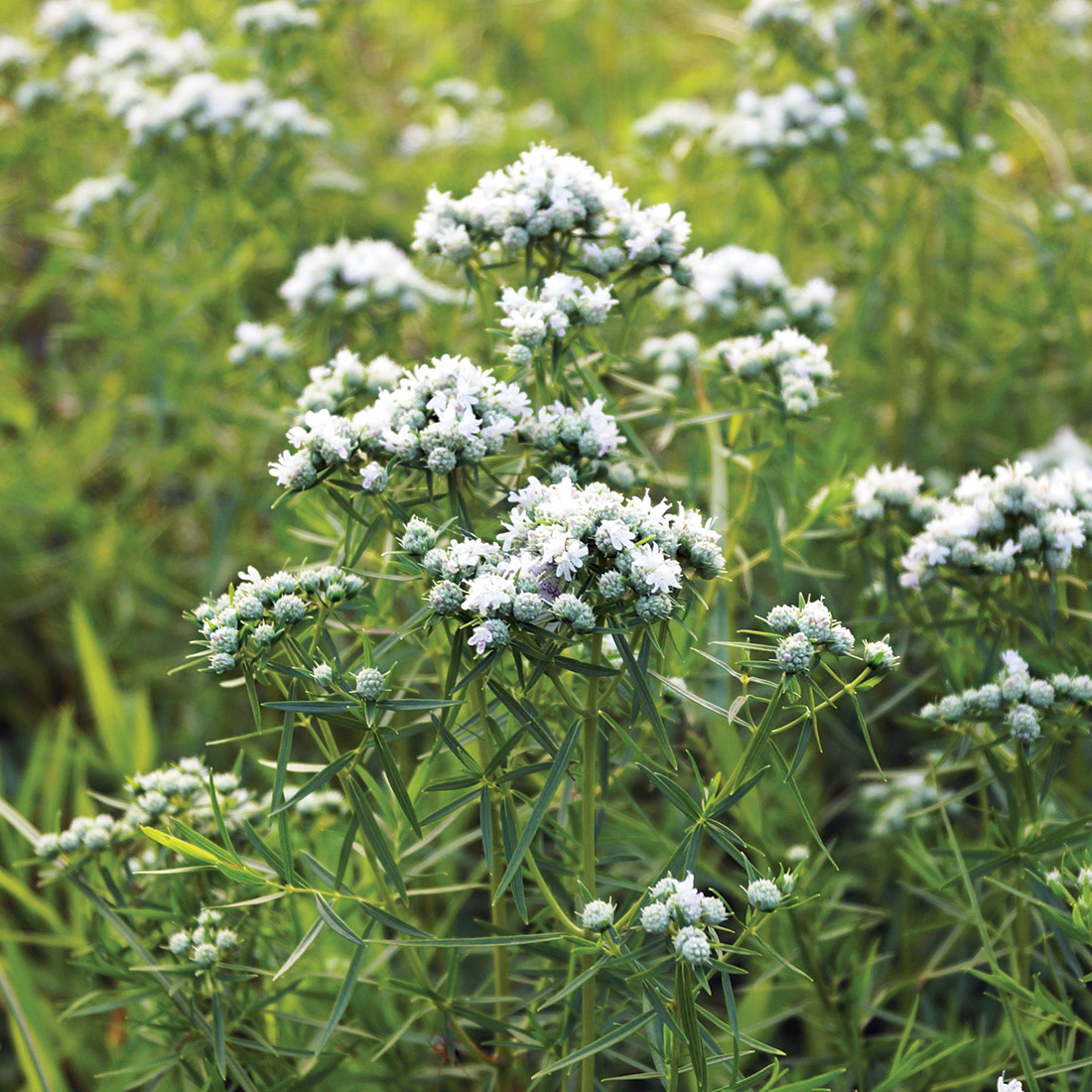
Name: Pycnanthemum tenuifolium
Zones: 4–9
Size: 2 feet tall and 2 to 3 feet wide
Conditions: Full sun to partial shade; dry to average, well-drained soil (but tolerates most soil conditions)
Native Range: Eastern United States
An incredibly versatile perennial, slender mountain mint is a tough-as-nails option for the perennial border, cottage garden, and pollinator-friendly landscape. Covered in little white flowers for most of the summer, this plant can often be seen blanketed in native bees and butterflies. It emerges in spring with dense, needlelike, dark green foliage that starts out in a clump form until midsummer. This interesting foliage is also pleasantly aromatic. Spreading by rhizomes and seed over time, slender mountain mint may benefit from being sheared late in the season to prevent self-sowing. It naturalizes well, providing a lovely backdrop and texture to the rest of the garden. This plant can tolerate anything from wet to drought, but may get floppy in overly moist or shady areas. It’s believed that rubbing the foliage on skin may provide some mosquito-repellent qualities. Native from dry prairies, to open woods, to lowland wet areas, this perennial will thrive almost anywhere.
Self-heal makes a great ground cover that is so tough, you can even walk on it
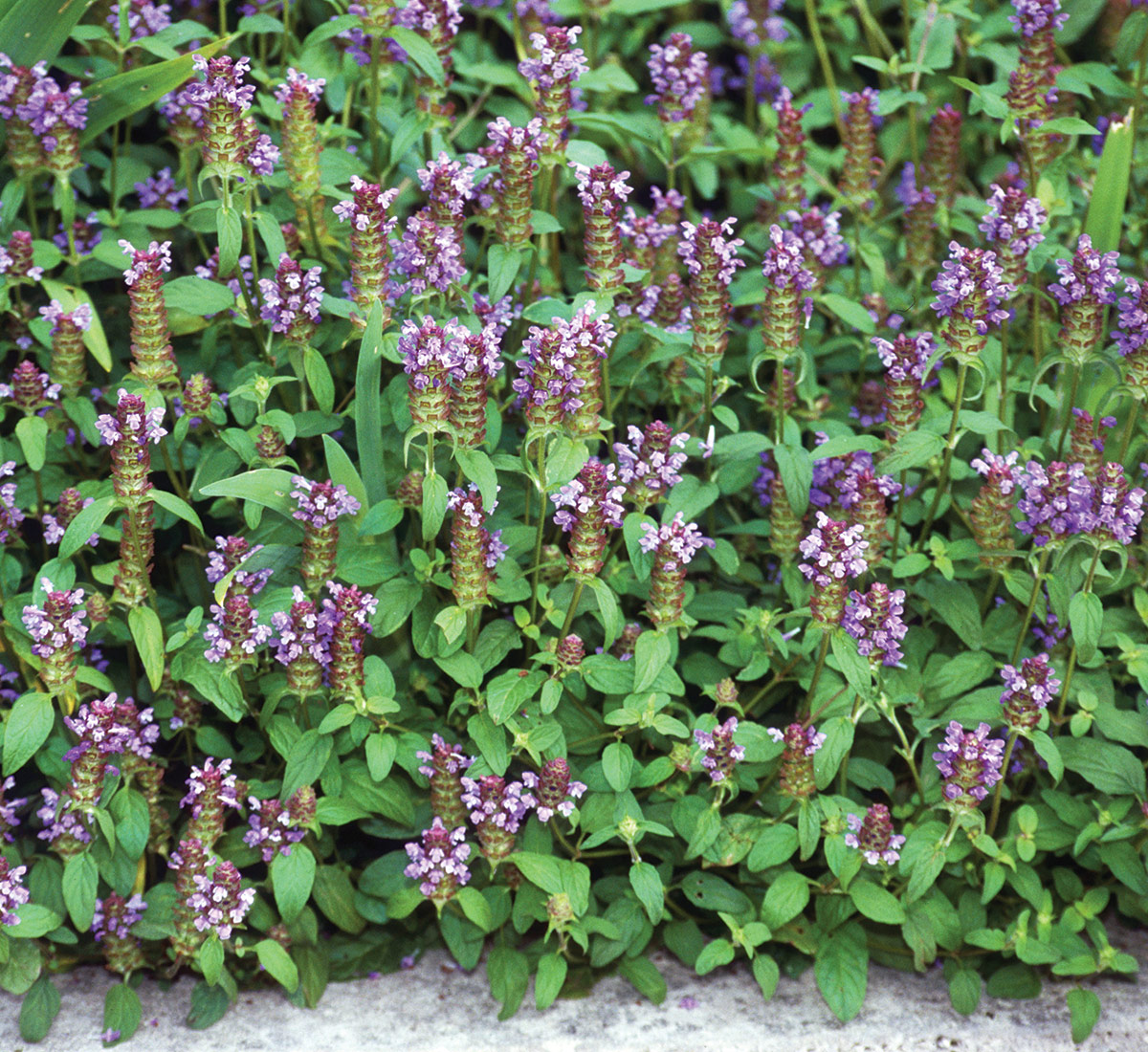
Name: Prunella vulgaris and cvs.
Zones: 3–9
Size: 1 to 2 feet tall and wide
Conditions: Full sun to partial shade; average to moist soil (but tolerates most soil conditions)
Native Range: North America
Native to almost all of North America, you may already have this plant growing in your garden and not even know it. One of the most adaptable native perennials, self-heal forms tight clumps of green foliage, sometimes creating carpets. With a big flush of white to lavender blooms midsummer, it continues to blossom sparingly until frost. Aromatic when brushed against, self-heal was originally named for its use in curing various ailments. It is a favorite among bumblebees and butterflies. Slowly creeping to become a ground cover, this cutie tolerates mowing and foot traffic, and is a great option for growing between pavers or along borders. Deadhead to prevent self-sowing. The foliage can get tints of red and purple in fall; some varieties can also be semievergreen. One favorite self-heal variety for purple flowers and a tight, ground-hugging habit is ‘Magdalena’, while ‘Variegata’ is a unique specimen plant with variegated leaves.
Top-notch Shade-lovers
Northern bedstraw is excellent for erosion control in dry shade
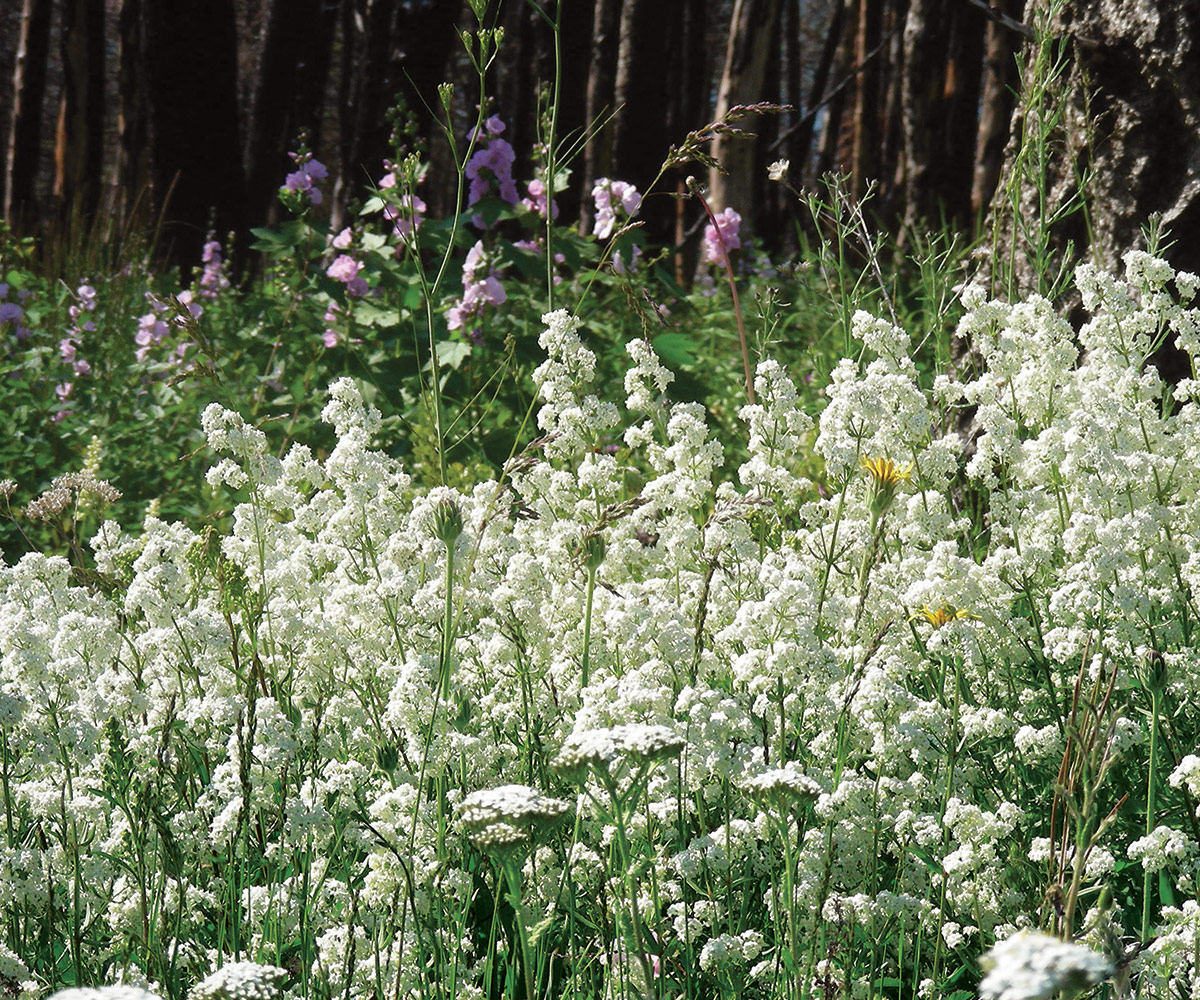
Name: Galium boreale
Zones: 4–8
Size: 2 feet tall and wide
Conditions: Partial to full shade; dry to average, well-drained soil (but tolerates most soil conditions)
Native Range: Northern and western United States
A smooth, nonsticky cousin of the more common cleavers or catchweed bedstraw (G. aparine, annual), northern bedstraw is a creeping perennial ground cover that can add great interest to the woodland, shade, or cottage garden. Fine-textured, lush, and dense mounds of foliage give rise to clouds of airy white blooms in early summer. Slowly spreading by rhizomes and seed, this plant will fill space between other perennials over time. Plant in masses for a stunning carpet effect, or let it roam around in the shade for a more naturalistic look. Aromatic foliage also makes this plant a good candidate for drying or using in arrangements. Bedstraw was traditionally used as stuffing for mattresses and pillows. Native to woodlands, woodland edges, and prairie swales, northern bedstraw can tolerate some sun if kept moist, but otherwise prefers to be in the understory of a mature canopy. Use this plant for erosion control on dry slopes or as a ground cover in dry shade.
American spikenard is big like a shrub, with white summer blooms and purple berries
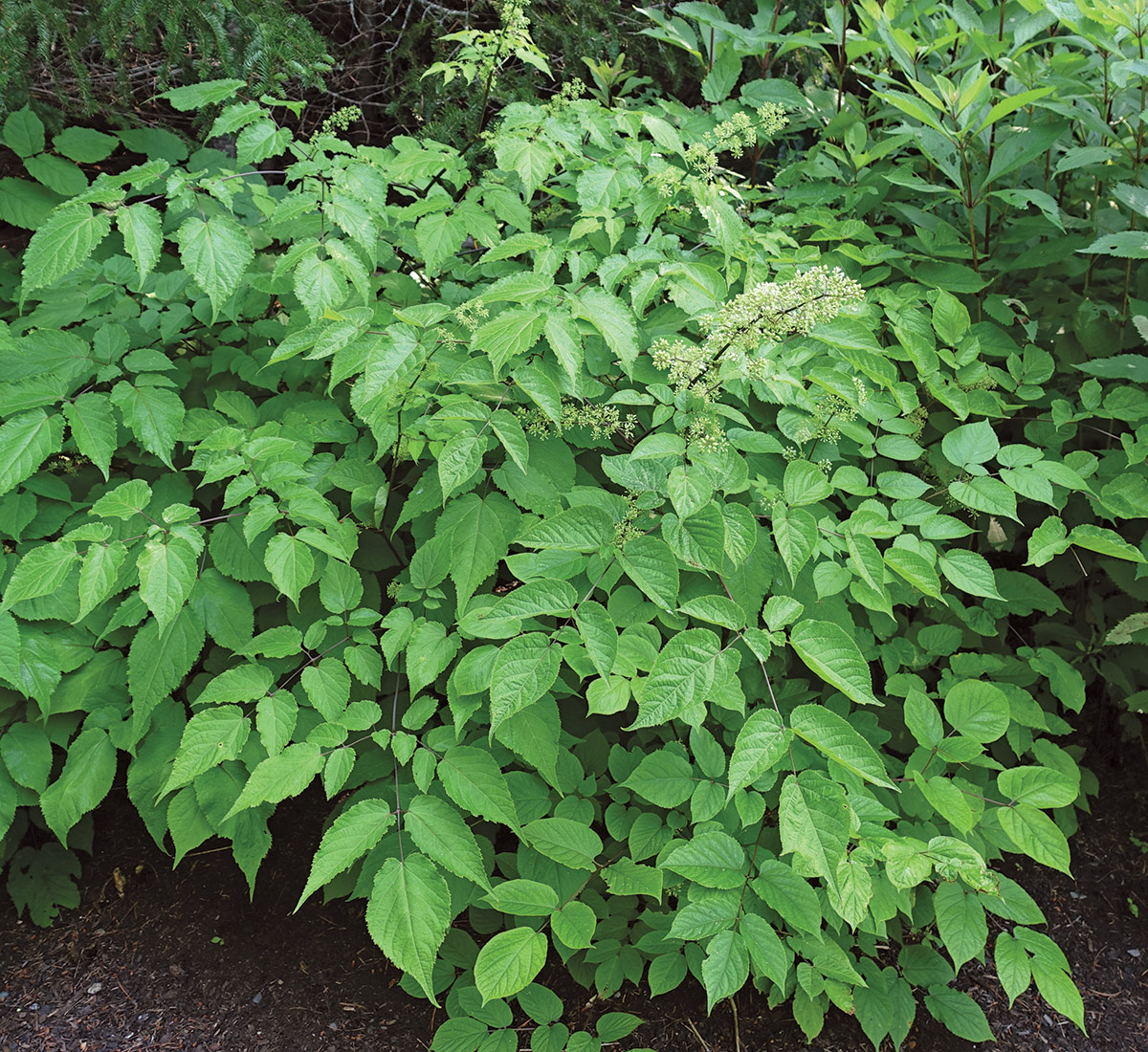
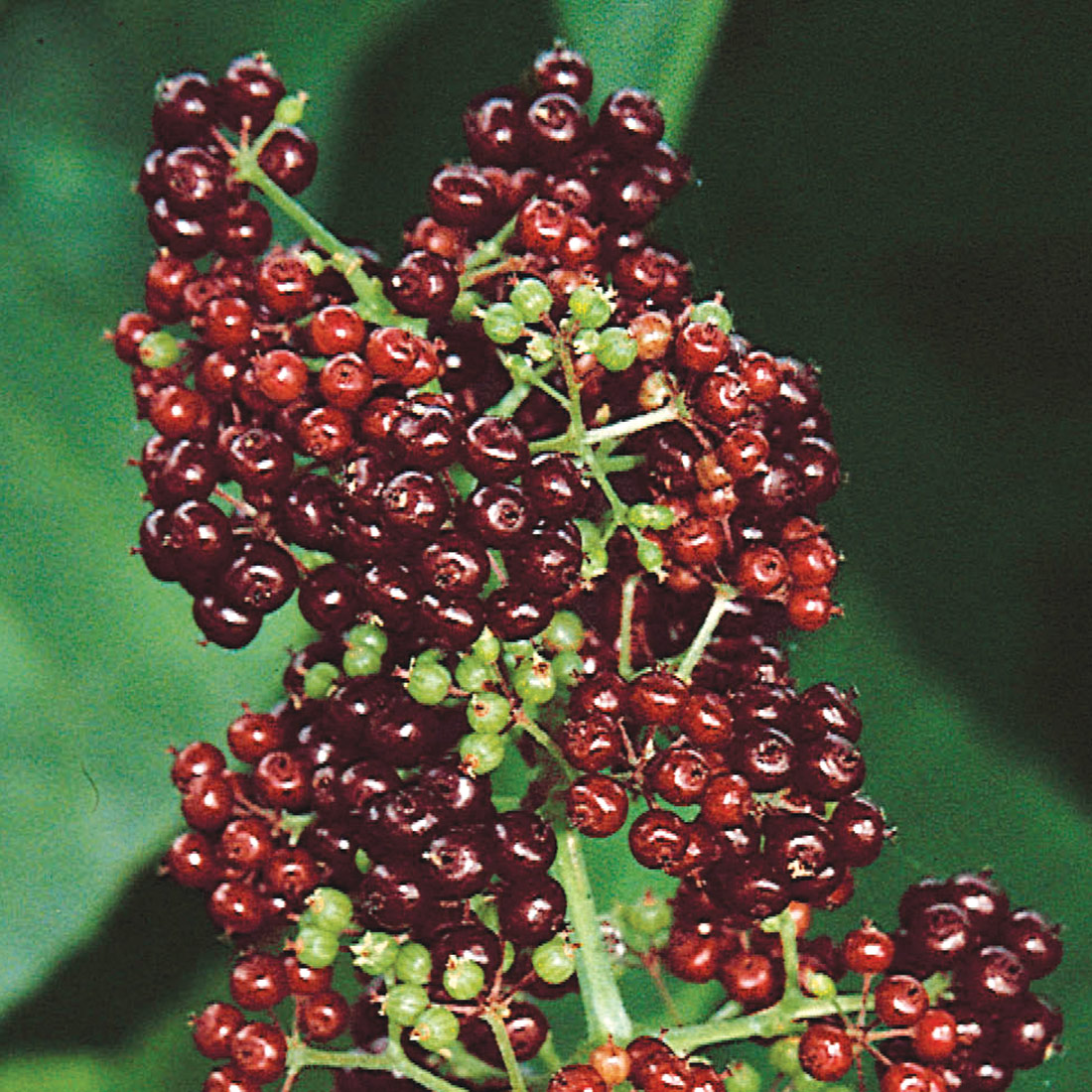
Name: Aralia racemosa
Zones: 3–8
Size: 4 feet tall and wide
Conditions: Partial to full shade; average, well-drained soil (but tolerates most soil conditions)
Native Range: Eastern, central, and southwestern United States
With an incredible native distribution from northern Mexico to Canada, this adaptable perennial becomes almost shrub-like size by the end of the gardening season. Large, coarse-textured, green leaves branch from reddish stems to form an architectural element in the shade. A true herbaceous perennial, the impressive size of the plant is achieved each season before dying all the way back to the ground. Fluffy, green to white flower spikes emerge in midsummer all over the plant before developing into extremely showy purple berries (inset). A favorite of many species of birds, the berries can also be used to make jelly. Native from moist woodlands of the eastern United States to coniferous forests in the Southwest, American spikenard can tolerate an astounding diversity of growing conditions. Fun fact: the roots of this plant were once one of the traditional ingredients used to make root beer.
Woodland pinkroot is a showy bloomer and a hummingbird favorite
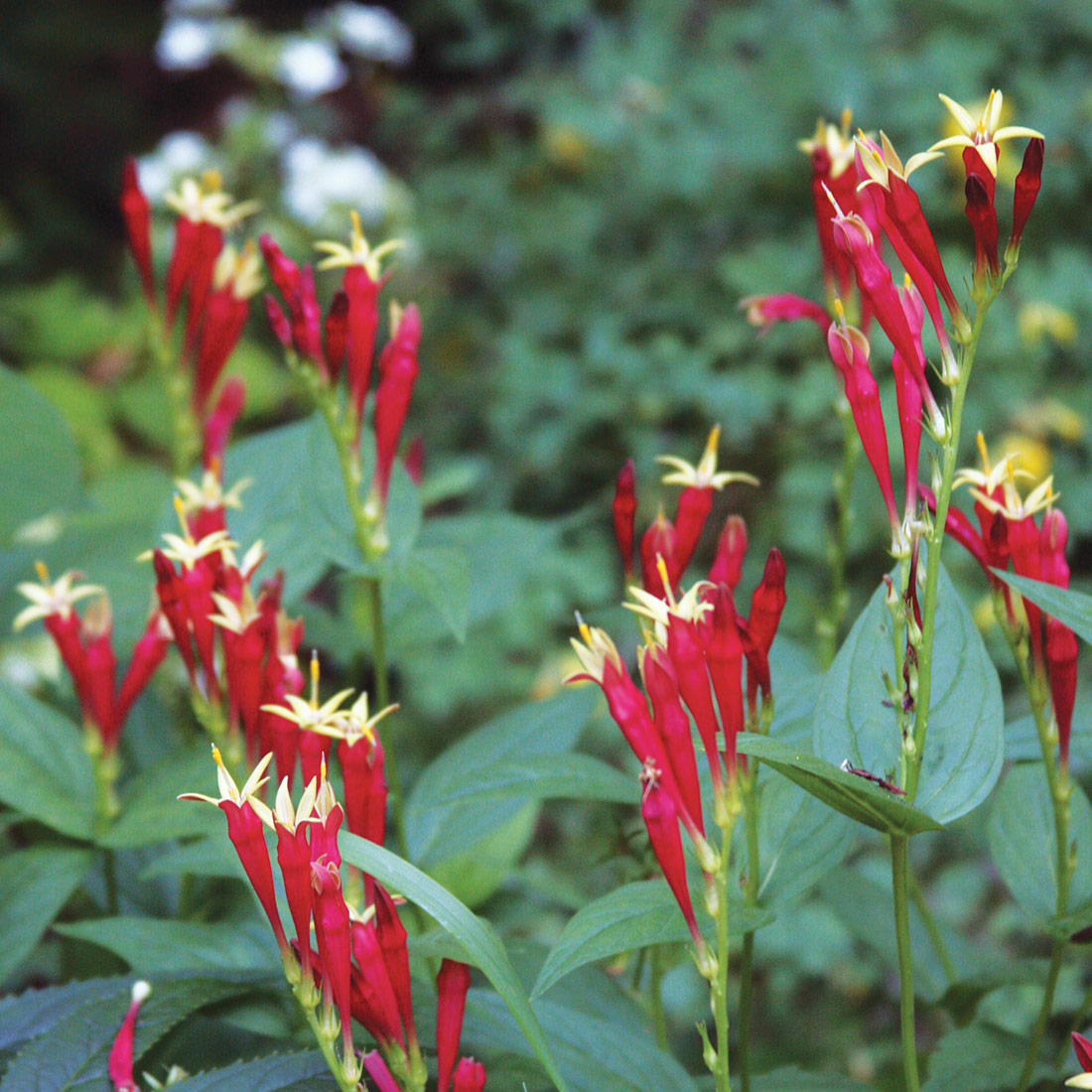
Name: Spigelia marilandica
Zones: 5–9
Size: 2 to 3 feet tall and 2 feet wide
Conditions: Partial to full shade; average to moist soil
Native Range: Southeastern United States
This showy, clump-forming native perennial is quickly becoming one of the most sought-after plants for every garden. In early summer, red, trumpet-shaped flowers with yellow centers cover the plant, providing a bright spot in the shade. Woodland pinkroot blooms sparingly for the rest of the season once established. Excellent for cut flowers, the blossoms show well in an arrangement. They are also a favorite of hummingbirds. Until fall, glossy green leaves and a mounding habit make this an attractive backdrop for later-flowering plants. This species is naturally found in woodlands, stream banks, and river floodplains but is adaptable to various soil types and growing conditions. Although woodland pinkroot is from a family of mostly tropical plants, it can survive some extreme freezing temperatures. Use it to brighten up a shaded wet area, near water features, or in rain gardens.
Eastern red columbine provides dainty flowers in spring
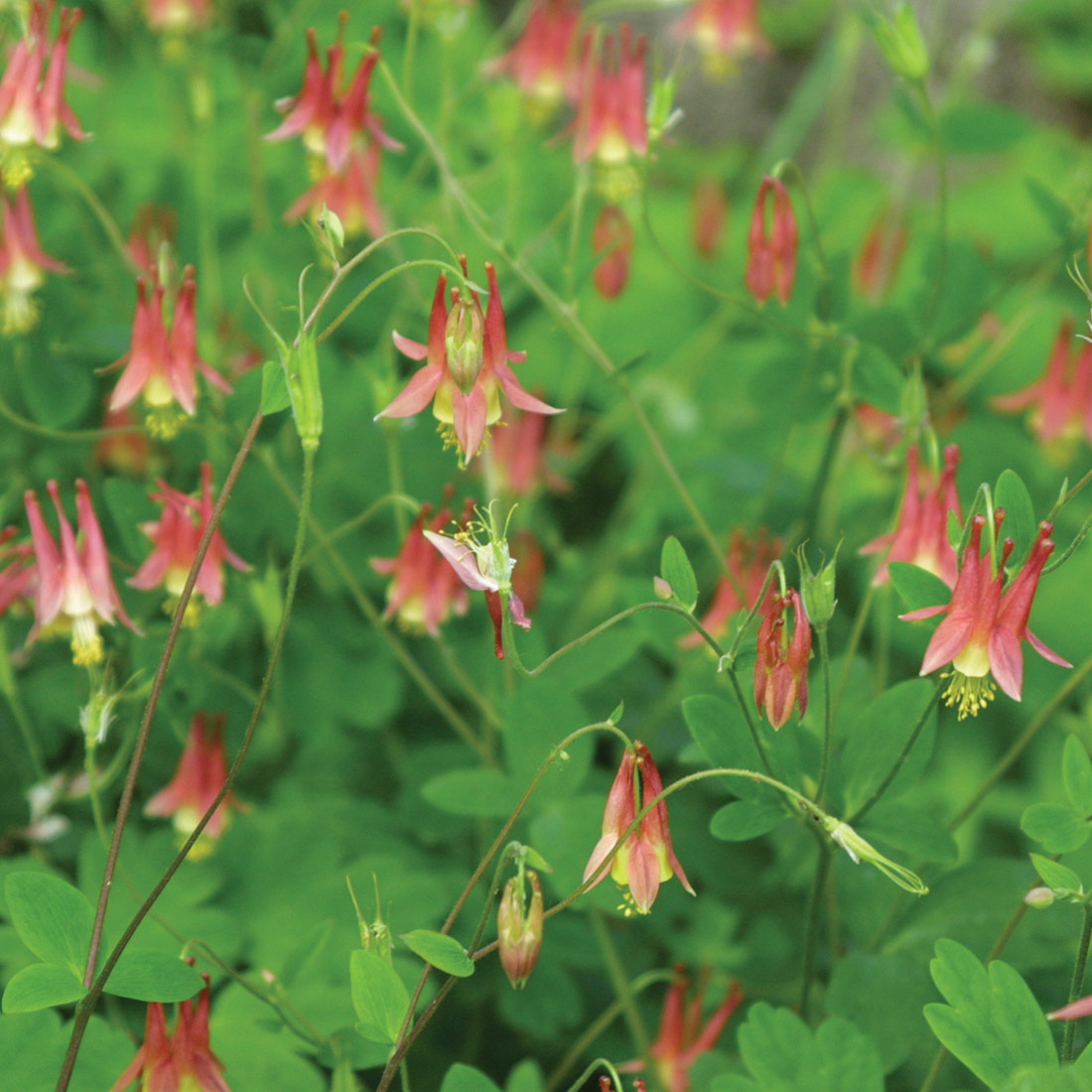
Name: Aquilegia canadensis
Zones: 3–8
Size: 3 feet tall and 2 feet wide
Conditions: Full sun to partial shade; average, well-drained soil
Native Range: Eastern and central United States
If you are a fan of hummingbirds and butterflies in your garden, then you need to grow this plant. A short-lived perennial that lightly seeds around, eastern red columbine has been a staple of cottage gardens, rock gardens, and shade gardens for decades. With hues of cream, yellow, and red, the flowers light up the garden between bulb season and the arrival of other spring perennials. Attractive blue-green foliage grows in mounds for the rest of the summer in moist sites, or can be cut back to the ground if leaves become unsightly. This native is spectacular when planted in a mass or can be sprinkled about for a more natural feel. Deadhead after flowering for an extended show and to prevent spreading, or leave the seed heads for added interest into summer. Native to woodlands or shaded slopes, eastern red columbine prefers good drainage. Soil that is too rich shortens the lifespan and may make it flop. In mild winters, the plant can be evergreen with slightly purple leaves.
Smooth Solomon’s seal stands out with a graceful form
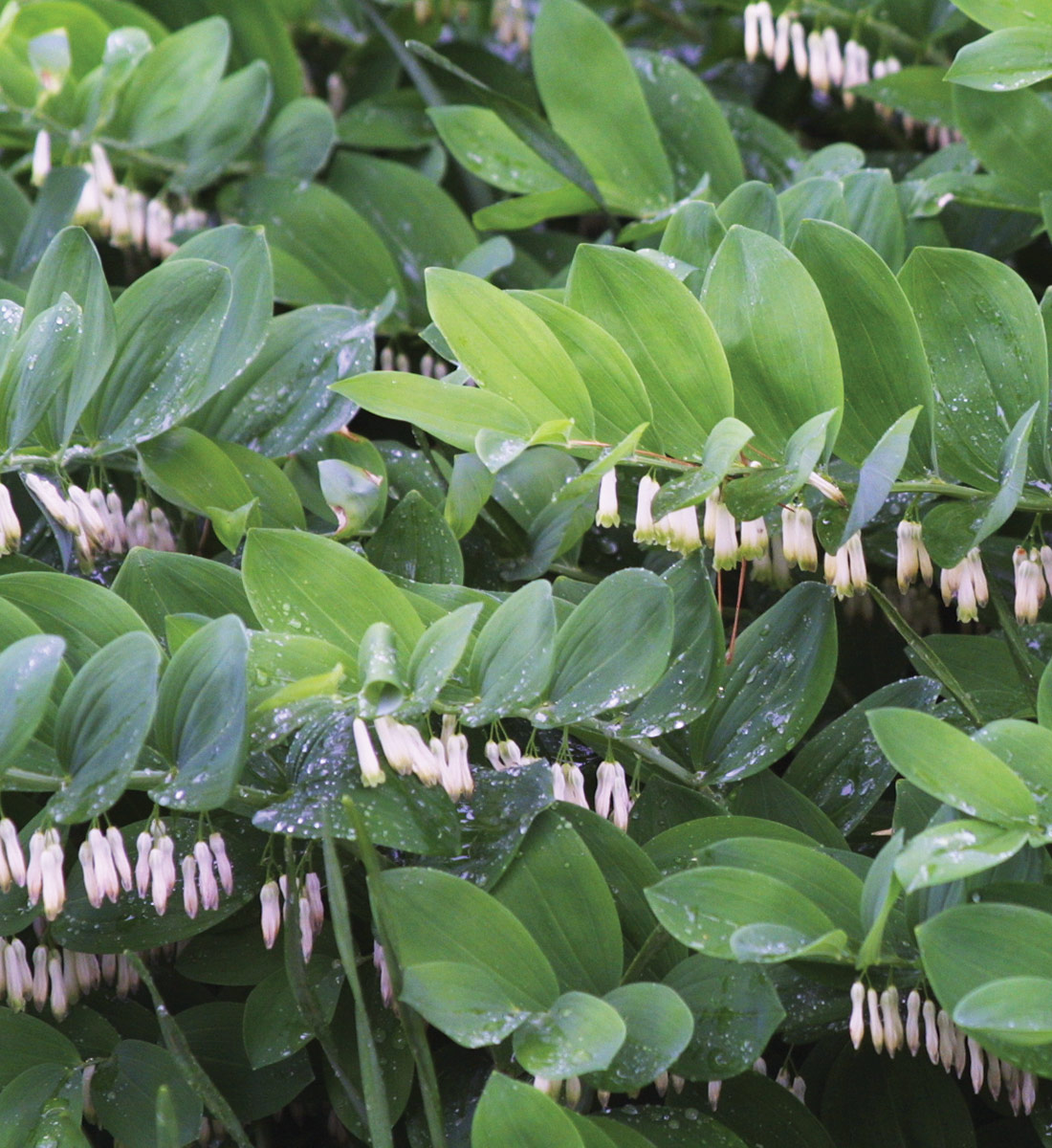
Name: Polygonatum biflorum
Zones: 3–9
Size: 1 to 4 feet tall and 2 feet wide
Conditions: Full to partial shade; average to wet soil
Native Range: Eastern, central, and southwestern United States
Smooth Solomon’s seal can be best described in one word: architectural. Graceful, arching stems erupt from the ground in spring, reaching 3 to 4 feet tall. Pairs of leaves then unfurl only upward from the main stem. Pendulous and tube-shaped, white flowers with green tips elegantly drape along the stem, giving way to deep-blue berries that are relished by birds. The plant spreads slowly over time through rhizomes, respectfully filling space between other shade perennials. Not picky about soil type, this is one of the few native plants that can handle conditions at the base of the trunk of mature trees. Closely related to fragrant or Japanese Solomon’s seal (Polygonatum odoratum, Zones 3–8), our North American native species can be more adaptable and much larger in height. Fall color can be yellow gold in mild years. Interesting facts: the tubers of this plant, once cooked, are very similar to potatoes, and the shoots are like asparagus; both have been consumed by indigenous peoples for thousands of years. However, the berries are poisonous.
David McKinney is the curator of collections and grounds at the Iowa Arboretum & Gardens, where he manages 40 acres of arboretum and 120 acres of native woodland/prairie.
Sources:
- American Meadows, Shelburne, VT; 802-227-7200; americanmeadows.com
- Missouri Wildflowers Nursery, Jefferson City, MO; 573-496-3492; mowildflowers.net
- Prairie Moon Nursery, Winona, MN; 866-417-8156; prairiemoon.com
- Tripple Brook Farm, Southampton, MA; 413-527-4626; tripplebrookfarm.com
Fine Gardening Recommended Products

Planting in a Post-Wild World: Designing Plant Communities for Resilient Landscapes
Fine Gardening receives a commission for items purchased through links on this site, including Amazon Associates and other affiliate advertising programs.
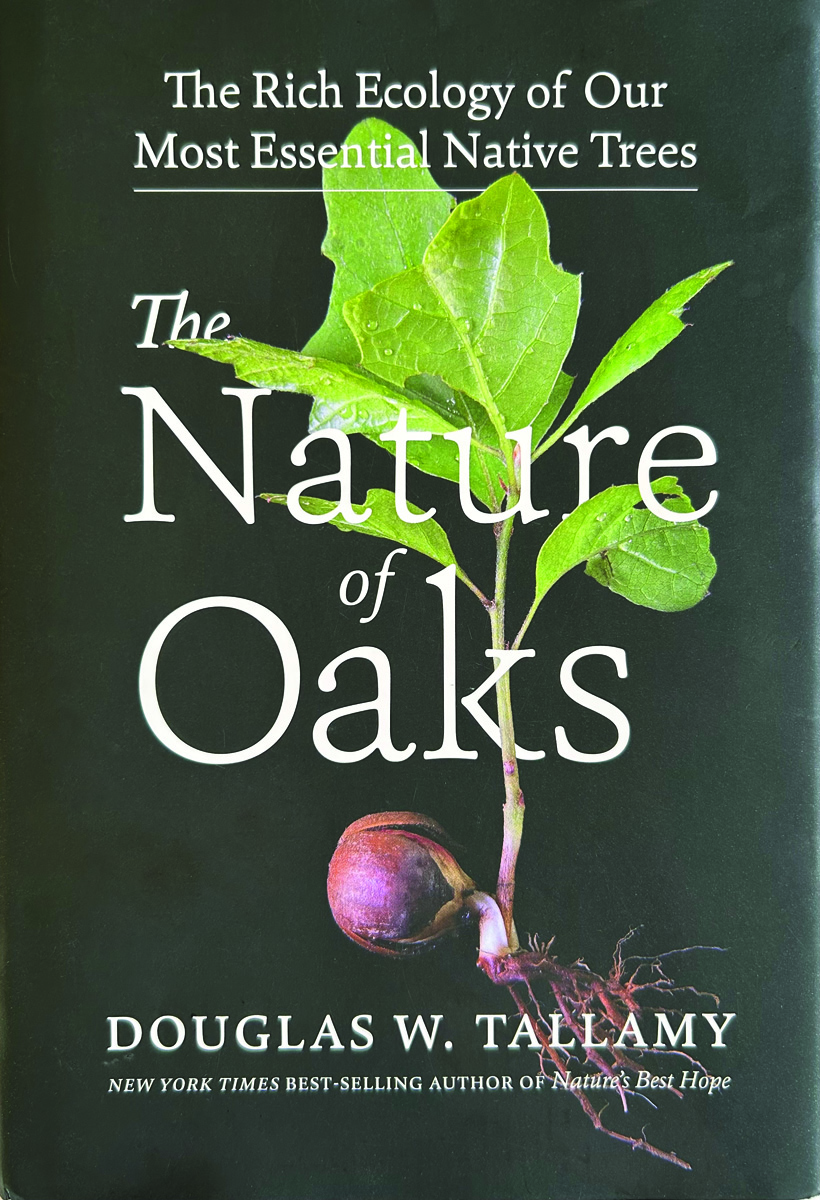
The Nature of Oaks: The Rich Ecology of Our Most Essential Native Trees
Fine Gardening receives a commission for items purchased through links on this site, including Amazon Associates and other affiliate advertising programs.
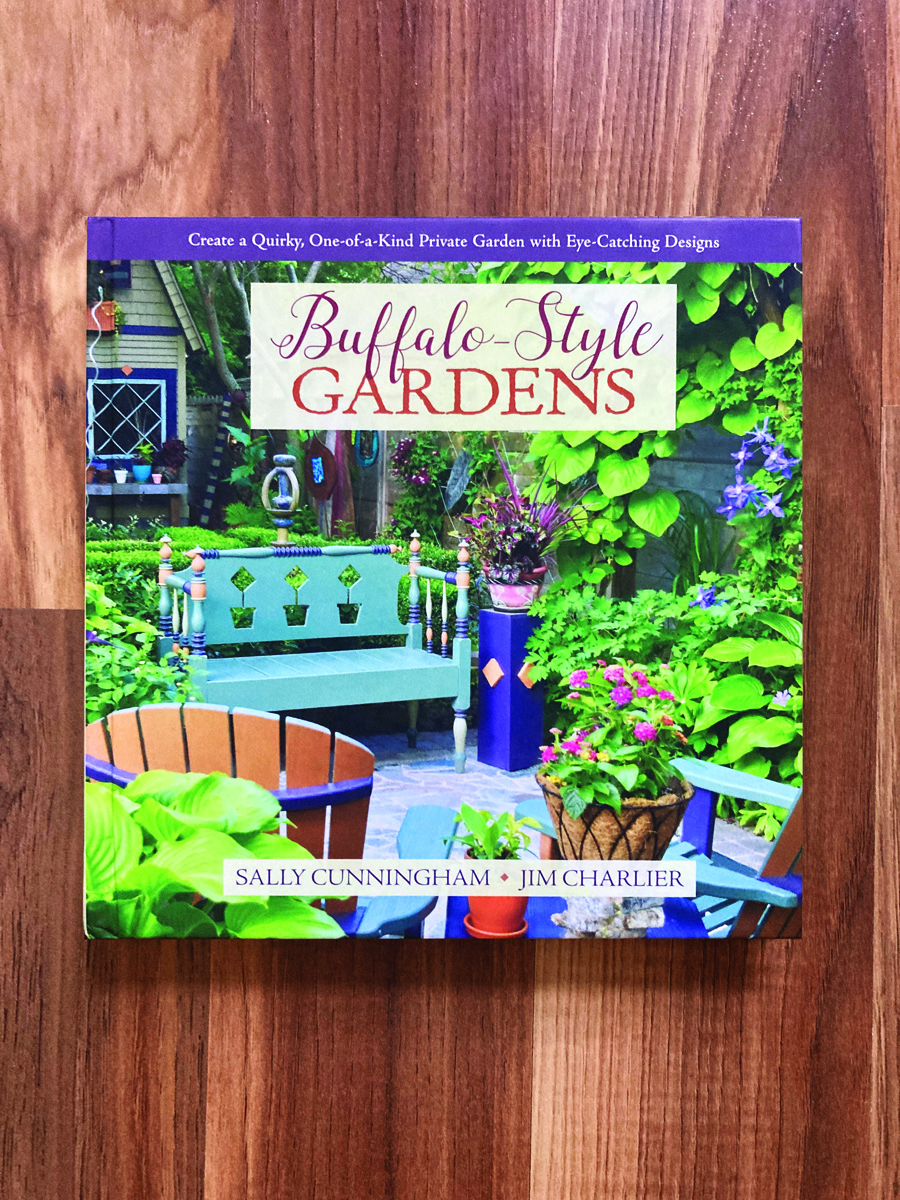
Buffalo-Style Gardens: Create a Quirky, One-of-a-Kind Private Garden with Eye-Catching Designs
Fine Gardening receives a commission for items purchased through links on this site, including Amazon Associates and other affiliate advertising programs.






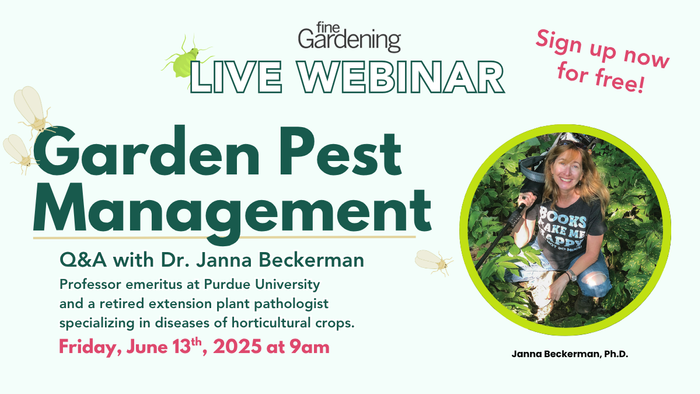
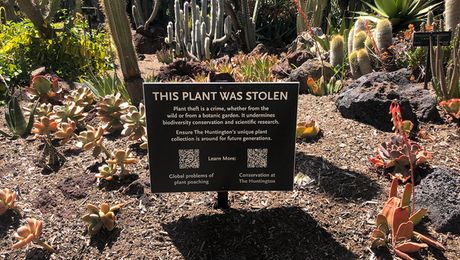
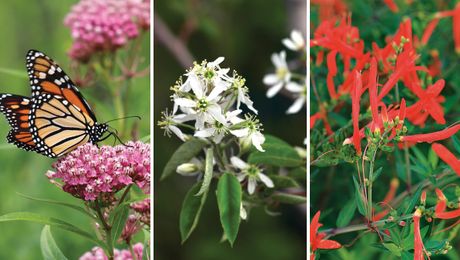










Comments
Log in or create an account to post a comment.
Sign up Log in